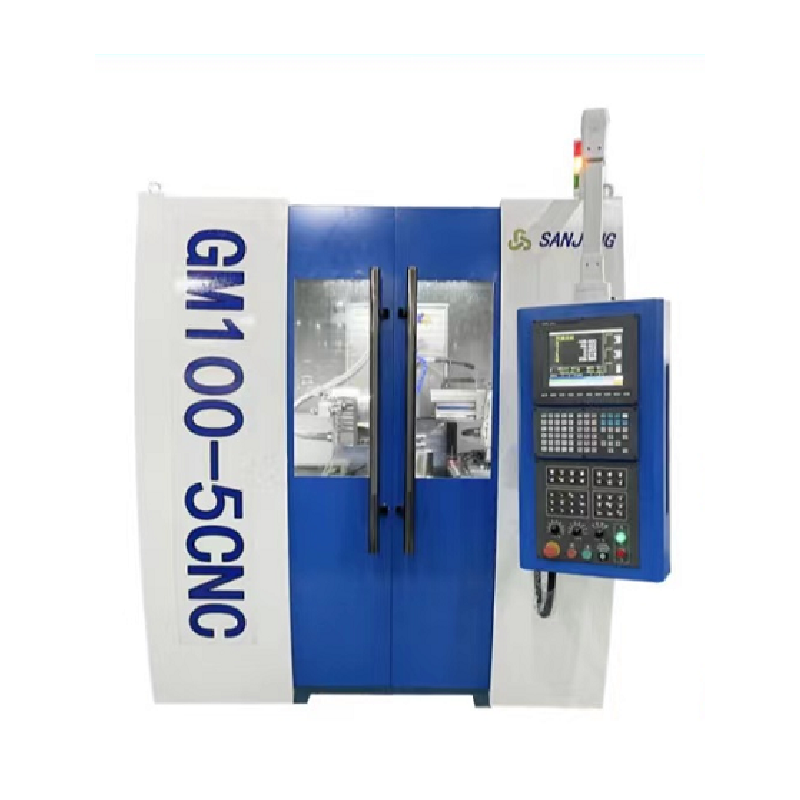Personal Protective Equipment in Blade Sharpening
Essential Safety Gear
Ensuring worker safety in environments dealing with sharpening equipment is paramount. Wholesale suppliers and manufacturers often emphasize the importance of personal protective equipment (PPE) to mitigate potential risks. The critical components of PPE for sharpening tasks include safety glasses, face shields, and cut-resistant gloves. These protect against flying debris, accidental contact with blades, and other common hazards.
Compliance with Safety Standards
Manufacturers are required to adhere to stringent safety standards when designing and offering equipment. This ensures that their products, distributed through factories and wholesalers, align with guidelines set by regulatory bodies, providing additional layers of safety for users.
Safe Handling and Operation Practices
Training and Skill Development
One of the foundational components of operational safety is comprehensive training. Manufacturers often partner with training organizations to ensure end-users understand the operational intricacies of their sharpening equipment. This helps prevent errors and accidents that may occur due to a lack of understanding.
Operational Protocols
Clear operational protocols must be established and adhered to. Workers should be trained to avoid placing hands or body parts near the blade's edge during operation, directly addressing one of the significant causes of workplace injuries.
Secure Installation of Blades
Proper Mounting Techniques
Blades must be securely installed to prevent movement during usage. Manufacturers emphasize the importance of using correct techniques and tools for mounting blades to minimize the risk of accidents. Wholesale distributors are often required to provide detailed installation guides to accompany the equipment they sell.
Regular Inspection and Maintenance
Regular inspection is a non-negotiable aspect of secure blade installation. Detecting wear and tear or improper installation early can prevent accidents and extend the machinery's life, ultimately benefiting wholesale operations by reducing the frequency of purchasing replacements.
Lockout/Tagout Protocols for Maintenance
Understanding Lockout/Tagout Procedures
Lockout/tagout (LOTO) is a critical safety protocol designed to protect workers from unexpected energization during maintenance activities. Manufacturers ensure that their equipment supports LOTO procedures, providing comprehensive guidelines to accompany their products.
Implementation in Factories
In factory settings, adherence to LOTO protocols is imperative to maintain a safe working environment. Proper implementation helps prevent accidental machine startups, which are a significant cause of workplace injuries.
Disposal of Used or Damaged Blades
Environmental and Safety Concerns
The disposal of used or damaged blades must be handled meticulously to prevent environmental harm and injuries. Manufacturers frequently provide guidelines to assist in the safe and compliant disposal of blades, often partnering with recycling facilities where blades can be processed safely.
Labeling and Storage
- Used blades should be labeled correctly to ensure they are handled safely.
- Proper storage solutions, such as designated disposal containers, can mitigate risks associated with blade disposal.
Tool Selection and Condition Checks
Selecting the Right Tool
Choosing the appropriate tool for specific tasks is pivotal. Incorrect tool selection increases the risk of accidents. Manufacturers provide detailed specifications and guidance to help end-users make informed choices, positively impacting wholesale and factory operations by optimizing efficiency and safety.
Regular Condition Assessments
Conducting routine condition assessments of tools ensures they remain in optimum operating condition. This practice minimizes workplace hazards and extends the tool's life, contributing to overall safety and cost-effectiveness.
Proper Tool Use and Cutting Techniques
Recommended Cutting Practices
Manufacturers provide clear guidelines on recommended cutting techniques to enhance safety and efficiency. Techniques such as cutting away from the body and avoiding excessive force are stressed to prevent accidents.
Avoiding Common Mistakes
Emphasizing the importance of focusing on the task, manufacturers highlight common mistakes like trying to catch falling tools, which can lead to injuries. Wholesale providers often offer workshops to reinforce these practices.
Transporting and Storing Sharp Tools
Safe Transportation
Proper transportation methods for sharp tools prevent accidental injuries. Tools should be carried with the blade pointing down and away from the body to reduce the risk of harm during movement.
Effective Storage Solutions
Storing sharp tools in sturdy toolboxes or racks with covered edges ensures both the personnel's safety and the tool's longevity. These methods prevent accidental contact and maintain tool integrity.
Understanding Sharpening Equipment and Techniques
Types of Sharpening Equipment
Sharpening equipment varies based on the blade type and application. Manufacturers offer precision machines and tools that allow for accurate sharpening, catering to diverse needs across wholesale and factory operations.
Importance of Proper Technique
Adopting the correct sharpening techniques is essential. The choice of technique affects the blade's performance and lifespan, highlighting the need for proper training and equipment selection guided by manufacturer recommendations.
Regular Maintenance and Cleaning Procedures
Maintenance Schedules
Manufacturers advocate for regular maintenance schedules to ensure equipment remains safe and efficient. These schedules help in identifying potential issues before they escalate, reducing downtime in factory settings.
Cleaning Protocols
Cleaning is vital to prevent contaminants from affecting performance. Proper cleaning protocols help maintain equipment integrity and prolong its operational efficiency, which is crucial in high-demand wholesale environments.
Boyue Provide Solutions
Boyue offers comprehensive solutions for enhancing safety in sharpening equipment environments. Our range of products supports PPE implementation, secure installation protocols, and training programs for proper equipment handling. In addition, we provide lockout/tagout kits and blade disposal solutions to ensure compliance with safety standards. By partnering with Boyue, factories and wholesale distributors gain access to innovative tools and guidelines that prioritize worker safety and equipment efficiency, ensuring seamless operations and improved workplace safety.
User hot search: surgical instrument sharpening equipment
Post time: 2025-08-01 11:43:05


